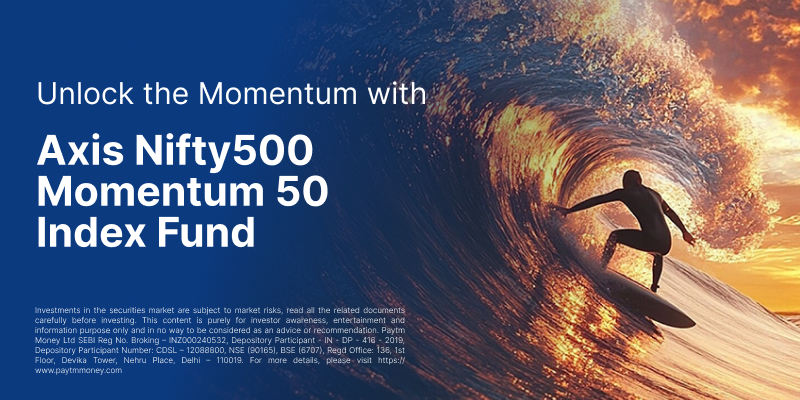Tired of complex financial terminologies? We are here to decode them for you!6 min read
The full form of UPI is Unified Payments Interface which is a payment method introduced by NPCI (National Payments Corporation of India). It is a major step taken by India to move towards a cashless economy by providing instant money transfers using a mobile phone where the user can link multiple bank accounts in a single app without having to go through the pain and complexity of providing a bank account number or IFSC code for making payments.
Let’s learn about the UPI jargon below:
- NPCI– The full form of NPCI is National Payments Corporation of India which is an umbrella organization launched by the Reserve Bank of India (RBI) and Indian Banks’ Association (IBA) under the provisions of the Payment and Settlement Systems Act, 2007, for creating a robust Payment & Settlement Infrastructure in India.
- Payer– The payer is a person who intends to pay/invest money.
- Payee– The payee is a person/merchant who intends to receive money.
- Issuing Bank– The issuing bank, also known as the payer’s bank/sender’s bank is the bank that is responsible for debiting the money from the payer’s account on NPCI’s request after receiving the payer’s authorisation and also sending the successful debit response back to NPCI.
- Acquiring Bank– The acquiring bank, also known as the receiver’s bank is the bank that is set up on the merchant end of the UPI transaction. It is the bank that is responsible for crediting the money on NPCI’s request and also sending the successful credit response back to NPCI.
- PSP– The full form of PSP is Payment service providers which are entities authorized by NPCI to process the UPI payments. They act as a bridge between UPI and merchants helping them to accept online payments in a safe and secure manner. Paytm, PhonePe, Google Pay are some of the popular examples of PSPs.
- Payer PSP- They are the payment service providers which allow the users to initiate/complete a payment.
- Payee PSP- They are the payment service providers which allow the merchants to receive a payment.
- UPI ID / VPA– UPI ID or VPA (Virtual Payment Address) is basically a financial address unique to every user, which helps to send/receive money in the user’s account through UPI. The benefit of using VPA to transfer money is that the user is not required to share the complex bank account details such as bank account number, and IFSC code to receive money. Moreover, VPA also offers an additional level of security for your transactions since neither the sender nor the receiver can find out the bank account details.
- UPI PIN– The full form for UPI PIN is Unified Payments Interface Personal Identification Number. It is a unique 4 or 6-digit code that is required to be set up by all users using UPI as a payment method as per the guidelines of NPCI. It serves as an authorization code for every UPI transaction done by the user and is unique to every bank account of the user.
- TPV– The full form for TPV is Third Party validation which is a very important regulatory feature for all companies in the BFSI (Banking, Financial Services and Insurance) sector. This feature implies that the transactions must be made by the users only from the bank accounts which they have pre-registered with the merchant.
- UPI Intent– UPI Intent is a type of UPI Payment method wherein the payer/sender initiates the transaction. The UPI Intent feature allows the user to select the preferred UPI App from among the list of UPI Apps installed on the user’s mobile device to make the payment. There are several benefits offered by UPI Intent flow for businesses such as higher conversion rates, decreased rate of payment abandonments, and reduced time in completing a payment. For customers, it can offer benefits like they can get rid of the hassle of remembering their UPI IDs / VPA, and no need to switch between applications (merchant App, PSP App) to complete the payment process.
- UPI Collect– UPI Collect is a type of UPI Payment method wherein the payee/receiver initiates the transaction. In this method, the customer is required to enter his UPI ID/ VPA which is first validated by the merchant and upon validation if it is found correct, a collect payment request is sent to the customer’s PSP App to complete the payment. In UPI Collect, the customer needs to move out of the merchant App by clicking on the notification / SMS received on his mobile device and complete the payment on the PSP App which often results in a break in the payment journey thereby increasing the number of payment abandonments.
- UPI Push– UPI Push also known as UPI InApp flow is one of the most advanced methods of UPI Payments. Here, the user is displayed the bank account which is linked to his UPI Handle on the merchant app. Once the user selects the bank account to make the payment, the merchant directly opens the UPI PIN page where the customer has to enter the UPI PIN to complete the payment.
Wrapping It Up
In conclusion, UPI, introduced by NPCI, has emerged as a game-changer in the Indian payment ecosystem. With its focus on simplicity, security, and convenience, UPI has paved the way for a cashless economy. By enabling users to link multiple bank accounts through a single app and facilitating instant money transfers via mobile phones, UPI has eliminated the complexities associated with traditional payment methods.
The involvement of issuing and acquiring banks ensures the seamless processing of transactions, while payment service providers (PSPs) act as vital intermediaries, enabling merchants to accept online payments securely. The introduction of UPI ID/VPA has enhanced privacy and reduced the risk of sharing sensitive bank account details.
Additionally, the UPI PIN serves as a personalized authentication code, adding an extra layer of security to each transaction. With these advancements, UPI has transformed the payment landscape, empowering individuals and businesses to transact with ease and confidence.
Customer Support
If you need any assistance, our dedicated customer support team exg.support@paytmmoney.com is always available to help 24×7, even though the market is open only for 6 hours a day.
You can choose from – Brokerage pricing, Mutual Funds, Stocks, F&O and NPS. With multiple languages supported and proactive resolution from our Customer Support, you’ll get answers to all your questions.
What are you waiting for? Start investing with Paytm Money for hassle-free payments.
Disclaimer: Investments in the securities market are subject to market risks, read all the related documents carefully before investing.This content is purely for information purpose only and in no way to be considered as an advice or recommendation. Paytm Money Ltd SEBI Reg No. Broking – INZ000240532. NSE (90165), BSE(6707) Regd Office: 136, 1st Floor, Devika Tower, Nehru Place, Delhi – 110019. For complete Terms & Conditions and Disclaimers visit: https://www.paytmmoney.com/stocks/policies/terms
Written By: Radhika Agarwal




